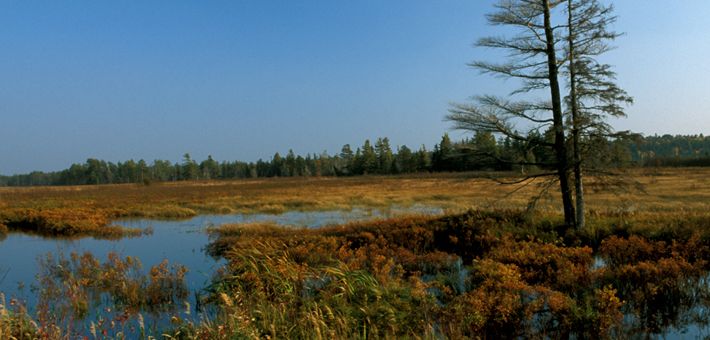Destruction of Small Wetlands Leads to More Algal Blooms
Published on by Water Network Research, Official research team of The Water Network in Academic
A new study suggests that small wetlands play a bigger role in filtering out pollutants and preventing algal blooms in the Great Lakes than their larger counterparts.

Great Lakes coastal wetlands. FWS photo.
Wetlands — which include marshes, seasonally flooded forests and bogs — play important roles as habitats for waterfowl, absorb the impact of large waves or floods and act as a filter preventing excess nutrients that come from fertilizers from reaching lakes and reservoirs.
"We have more and more agriculture and organizations that are leading to nutrient pollutions in our land, and at the same time, we are losing these wetlands that filter these pollutants and prevent them from reaching the downstream waters," said Nandita Basu, an author of the study and an engineering professor at the University of Waterloo.
Wetlands cover about 14 per cent of the country's total land area, according to Environment Canada. In southern Ontario, 68 per cent of the original wetlands have been lost to development like agriculture and housing.
And when wetlands aren't there to do their jobs, problematic algal blooms develop, according to Basu's study in the journal Water Resources Research, suffocating aquatic life and worsening the quality of drinking water.
Basu said her team examined previous studies and modelled out how wetlands filter pollutants from the water, and they found that smaller wetlands are more effective than larger ones.
"If you take 10 one-hectare wetlands, they are a better filter than one 10-hectare wetland," she said. She explained it's because in small wetlands more of the water touches the soil, which does all the heavy lifting in filtering out pollutants.
But she said the Ontario government's guidelines are more likely to protect larger wetlands than small ones, because large wetlands are habitats for waterfowl.
"What we are not saying is, 'this is more important than that,'" she said. "We really need to understand how these different groups of wetlands have different functions, and when we are protecting them, you should protect the different functions."
She noted that more studies need to be done to figure out which wetlands are most ecologically significant.
Read more: Ottawa Citizen
Media
Taxonomy
- Decontamination
- Watershed Management
- Watershed
- Algae
- Wetlands
- Lake Management
- Algae Treatment
- Environmental Impact
- Environmental